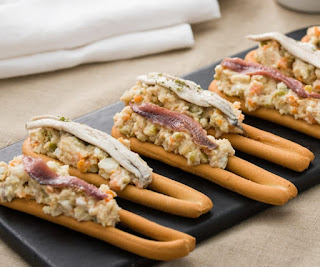Risas lagrimas y cricket. India 2024
Cuatro años de pausa autoimpuesta y relacionada con Covid en los viajes internacionales habían acumulado suficientes razones, personales o familiares, como para que fuera inevitable que volviéramos a mis raíces más temprano que tarde en 2024. Unos meses antes habíamos visitado a mi hermana mayor. en Florida y decidimos que necesitaba un cambio y solo viajaría a la India si la acompañábamos, así que cuando mi hermano (Pammi) nos invitó a todos, nos dirigimos a India en Marzo, cuando la contaminación en Delhi era menor y el calor del verano aún no habia llegado a su punto máximo. Después de la primera semana, cuando necesitábamos una manta por la noche, el calor se hizo cargo y prácticamente toda la estancia transcurrió con ropa de verano, mangas y pantalones cortos. La contaminación era relativamente baja, pero todavía insalubre en comparación con nuestra casa en Europa, y fue necesario usar aerosoles antihistamínicos para estar cómodos durante nuestra estancia.
En el tiempo transcurrido desde la última vez que estuvimos en India, los precios habían aumentado significativamente debido a que la inflación es alta, pero el estado de la infraestructura aún era peor de lo que cabría esperar de una economía que está tratando de llegar a las cuatro primeras del mundo. Hay mucha evidencia de progreso y de la guerra contra la pobreza, sin embargo, cuando uno se aleja de los ostentosos centros comerciales y los costosos complejos de apartamentos urbanos, todavía queda trabajo por hacer. Muchos de los barrios marginales alrededor de Delhi han desaparecido y los salarios han aumentado, de modo que parece que al menos en la capital la gente puede permitirse vivir. Las autoridades han tomado medidas para limpiar las calles de chabolas y personas que duermen a la intemperie y algunos esfuerzos para retirar los montones de escombros que solían ser la norma hace algunos años.
Habían pasado años desde que mi hermano, mi hermana y yo estábamos juntos, así que hicimos todo lo posible por estar juntos y recordar viejas historias familiares, a veces riéndonos histéricamente de los recuerdos de incidentes cómicos, incluso si los habíamos escuchado muchas veces antes. El punjabi puede ser un idioma muy divertido y, a menudo, no se traduce bien, por lo que contar estas historias en su idioma original fue un placer que no debe perderse. El festival de Holi tuvo lugar poco después de nuestra llegada y nos sumamos a las festividades de la zona, organizadas por la asociación de vecinos. Esto incluyó música, baile y mucha comida en un parque cercano y el habitual intercambio de color entre todos los presentes en la reunión. Habíamos comprado camisetas de un blanco puro especialmente para el evento y estas ya estaban coloreadas cuando llegamos a la fiesta porque con solo caminar unos pocos metros hasta el parque había que esquivar bombas de agua hechas con globos lanzados desde todos los balcones del barrio.
 |
| Holi |
Uno de mis primos de Sydney coincidio con nuestra estancia y nos invitó a quedarnos en una villa de lujo en Goa por unos días, así que aceptamos y volamos juntos a Goa. Un nuevo aeropuerto muy mejorado nos recibió hacia el sur, pero el calor era insoportable. Afortunadamente, la villa tenía piscina, así que al menos era posible relajarse por las noches. El administrador de la villa había venido a recibirnos y cuando supo que Marisol era española, reveló que era amigo de un chef de España, y resulta que conocemos al chef y su restaurante que está muy cerca de donde vivimos en España! El mundo es un pañuelo.
El propietario de la villa nos había proporcionado un coche y nos había dado muchos consejos sobre bares y restaurantes para probar en Goa y esto resultó ser una ventaja. Uno de los restaurantes en los que cenamos se llamaba 7 Short and 1 Long dirigido por dos señoras. Cuando preguntamos por el nombre, era una referencia al código de emergencia para barcos y fue elegido por la asociación de los propietarios con el transporte marítimo. La comida era excelente, cocina de Goa, compuesta de carne en salsas oscuras y pescado fresco y gambas. Nos sentamos en una terraza al aire libre dentro de un hermoso jardín tropical mientras un músico en vivo cantaba todos nuestros viejos temas favoritos de los años sesenta y setenta.
El otro hallazgo notable fue el bar Mhambrey. Se destaca de lo común, en medio de la nada al final de un camino que termina en el río Mapusa sin puente. La dirección en Google es Unnamed Road, Khorujuven, Haldona, Goa. Nos dijeron que este bar ofrecía la mejor bebida destilada casera de anacardos Lavnechi Feni (para la erradicación de la tristeza incurable) y su hermana, la Goan Urrak, también hecha de anacardos. Llegamos y encontramos el bar cerrado, aunque nos habían asegurado que estaría abierto cuando llegáramos allí.
Esperamos.
Pasó media hora y ya estaba oscureciendo cuando nuestra fuente sugirió que llamáramos a un número de teléfono que estaba en la puerta lateral. El dueño vivía cerca y vino inmediatamente a abrir. Pedimos ambas bebidas para comparar los sabores y venían con chiles frescos que nos dijeron que revolviéramos brevemente en la bebida. Cuando revolvíamos los chiles, una nube del aroma más picante se elevaba del líquido. Era imposible tomar un sorbo de la bebida sin contener totalmente la respiración, a lo que requirió algunos intentos para acostumbrarse.
Las bebidas estaban bien sin mas, tenían un sabor picante y ahumado, pero todo el proceso y la ceremonia fueron inolvidables. Mientras la oscuridad descendía a nuestro alrededor, disfrutamos del cálido efecto de estos cócteles de anacardos en circunstancias muy inusuales. Al estar fuera de la ruta turística, las bebidas también eran ridículamente baratas y dejamos una gran propina para compensar.
Antes de tomar el vuelo de regreso a Delhi, tuvimos tiempo suficiente para pasar por la zona de Old Goa y visitar las dos iglesias icónicas, que ahora forman parte del Patrimonio Mundial. Era un día muy caluroso y soleado. Aunque las iglesias estaban justo al otro lado de la calle, todavía era tentador subirse a un automóvil para recorrer los cincuenta metros porque hacía mucho calor. Las iglesias y sus interiores habían tenido mejores días, pero tenían algo de ese encanto del viejo mundo.
De regreso a Delhi caímos en la rutina de visitar por la mañana un centro comercial, mercado o monumento de interés, seguido de una buena comida y una hora de descanso para escapar del calor y luego el partido de cricket nocturno de la IPL, la competicion más publicitado y rico del calendario de cricket. En la categoría de compras había hasta diez grandes centros comerciales a quince minutos en coche de la casa de Pammi en Gurgaon. Descubrimos lo barato que era Uber para desplazarse localmente. En la categoría de comida, disfrutamos tanto en la cadena Haldiram como en los elegantes restaurantes de la ciudad, y no menos importante la brillante cocina diaria del cocinero que nuestros anfitriones habían contratado. Los monumentos incluían el templo sij Bangla Sahib y el cercano Ugrasen Bauli. Este último es una fuente de agua de la época mogul cuidadosamente escondida en el corazón de Delhi y aún desconocida para turistas y taxistas. En la antigüedad, el "bauli" era un depósito de agua muy parecido a una piscina pública al aire libre, con maravillosas paredes y escaleras que subían y bajaban por todos lados.
 |
| Camera Museum |
 |
| Ugrasen Bauli |
Entre toda esta actividad tambien hubo algunos momentos tristes y solemnes. Los lazos familiares dictaban que los miembros que habían partido de esta vida en los años en los que no habíamos podido viajar necesitaban ser recordados y afligidos. Una parte muy importante de pertenecer a una red familiar más amplia. Participamos en oraciones, muchos abrazos y algunas lágrimas. Consideren orar por mi familia y ayudar a que la tristeza se dispeje y que las personas emerjan a un estado de ánimo nuevo y más feliz.
Pronto llegó el momento de hacer las maletas y emprender los largos vuelos a casa. Pero no sin un ataque de última hora del Delhi Belly que pasó factura (no entremos en detalles), pero en poco tiempo devolvió mi peso al nivel previo a la llegada a India.
Quiso la suerte que nuestro vuelo a Delhi Frankfurt fuera operado por Air India. Últimamente, esta aerolínea ha estado gastando mucho dinero en aviones nuevos y bajo los nuevos propietarios (Tata), han estado en una campaña de marketing para atraer a clientes que durante mucho tiempo han sufrido problemas de mala gestión y mantenimiento. Sin embargo, si nos atenemos a nuestra experiencia de vuelo, todavía no han mejorado lo suficiente. Nuestros asientos tenían todo mal. Los cinturones de seguridad se resbalaban cuando estaban en uso, los respaldos estaban rígidos hasta el punto de pensar que estaban atascados, los reposapiés estaban rotos y, para colmo, el sistema de entretenimiento a bordo se había fallado y se había negado a funcionar durante todo el vuelo. Esto significó que tuvimos mucho tiempo para hablar entre nosotros. Afortunadamente, la señora del asiento de al lado también tuvo el mismo problema y empezamos a hablar. Era de origen alemán y viajaba sola y vestía la ropa típica sij para mujeres de origen religioso ortodoxo, incluido un turbante.
Ella me dijo "Sat sri akal" tan pronto como se sentó. “He estado casada con un Sirdar (hombre sij) durante 40 años”, se ofreció cuando le pregunté cortésmente. Nos presentamos con “oh, aquí Marisol ha estado casada con un Sirdar durante 50 años”. Hablamos un rato sobre las habituales preguntas de curiosidad y luego, cuando después del almuerzo llegó el momento de tomar una siesta, sacó un libro de oraciones sij en punjabi y comenzó a leer. Más tarde explicó que había estudiado el idioma y sabía leer, escribir y hablar.
Finalmente tomamos un vuelo de Frankfurt a Bilbao, donde nos recogieron para el corto viaje a casa.



















.jpeg)

.jpeg)


















